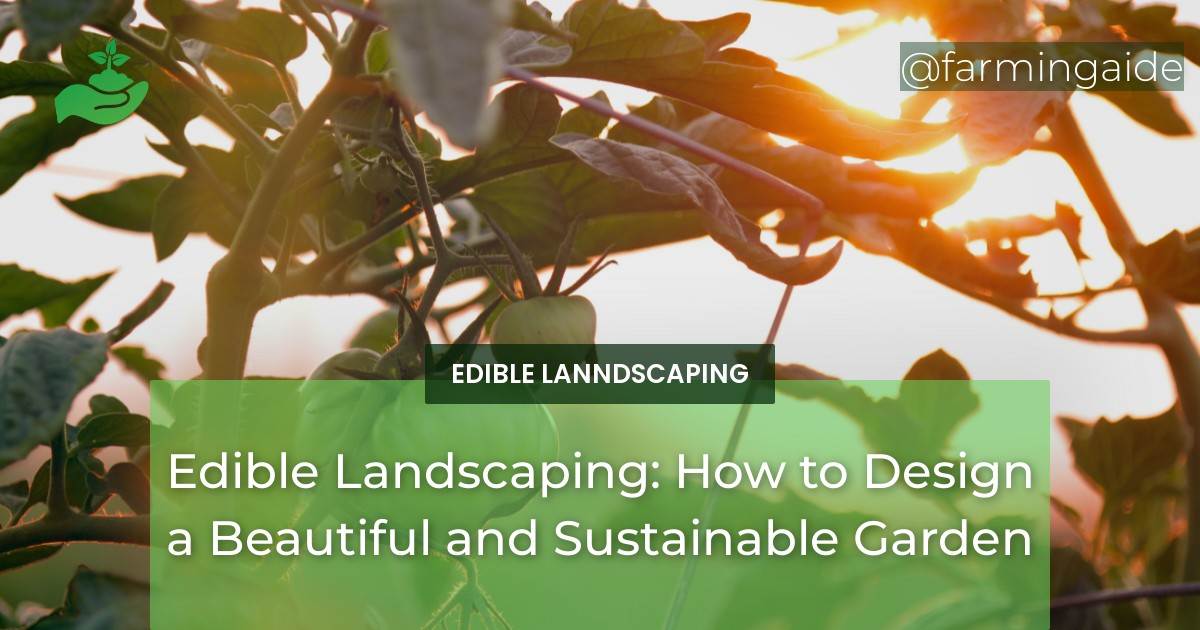Edible landscaping is a growing trend in the world of gardening and landscape design. It involves incorporating edible plants into a traditional landscape, creating a beautiful and sustainable garden that not only looks visually appealing but also provides a source of fresh produce. This concept is gaining popularity as more people become interested in sustainable gardening practices and the benefits of growing their own food. In this article, we will delve into the world of edible landscaping and explore how to design a beautiful and sustainable garden that will not only enhance the aesthetics of your outdoor space but also provide you with a bountiful harvest.
Introduction to Edible Landscaping
Edible landscaping is the practice of incorporating edible plants into a traditional landscape design. This can include fruits, vegetables, herbs, and even edible flowers. The concept of edible landscaping is not new, but it has gained more attention in recent years due to the growing interest in sustainable gardening practices and the desire for fresh, homegrown produce.
There are numerous benefits to incorporating edible plants into your landscape design. Not only does it provide a source of fresh, organic produce, but it also adds visual interest and diversity to your garden. Edible landscaping also promotes sustainability by reducing food waste and promoting biodiversity in the garden.
As more people become interested in sustainable gardening, the demand for edible landscaping has also increased. This has led to a variety of resources and information available on how to design a beautiful and sustainable garden with edible plants.
Designing a Beautiful and Sustainable Garden
Creating a Layout
When designing an edible landscape, it is important to consider the layout of your garden. This includes the placement of plants, pathways, and structures. Some key considerations for layout design include:
- Utilizing vertical space for maximum yield
- Incorporating pathways and structures for easy access and maintenance
- Importance of spacing and grouping plants for optimal growth
By carefully planning the layout of your garden, you can maximize the use of space and create a functional and visually appealing design.
Incorporating Aesthetics
While the primary focus of edible landscaping is on functionality, it is also important to consider aesthetics when designing your garden. Balancing function and beauty is key in creating a cohesive and visually appealing design. Some tips for incorporating aesthetics into your edible landscape include:
- Using different plant textures and colors for visual interest
- Incorporating edible plants into existing garden features
- Creating a cohesive design by choosing plants that complement each other
By incorporating these elements, you can create a garden that not only provides fresh produce but also adds beauty to your outdoor space.
ALSO READ
Sustainable Practices for Edible Landscaping
One of the main principles of edible landscaping is sustainability. This includes practices that promote the health of the environment and reduce waste. Some sustainable practices to consider when designing your edible landscape include:
- Importance of soil health and composting for nutrient-rich soil
- Utilizing natural pest and disease control methods
- Incorporating sustainable watering techniques
- Tips for reducing waste and promoting biodiversity in the garden
By implementing these practices, you can create a garden that not only benefits you but also the environment.
Selecting Suitable Plants
Factors to Consider
When choosing plants for your edible landscape, there are several factors to consider to ensure their success. These include:
- Climate and growing conditions
- Sun exposure and location in the garden
- Growing habits and maintenance requirements
- Importance of choosing disease-resistant plants
By taking these factors into account, you can select plants that will thrive in your specific garden environment.
ALSO READ
Edible Plant Options
There are countless edible plants that can be incorporated into an edible landscape. Some popular options include herbs, fruits, and vegetables. When selecting plants, it is important to choose a variety that complements each other and can be grown together in the same space. Companion planting, which involves planting different plants together for mutual benefits, can also be used to improve pest control and growth. Some popular edible plants for landscaping purposes include:
- Herbs: basil, rosemary, thyme, mint
- Fruits: strawberries, blueberries, raspberries
- Vegetables: tomatoes, peppers, lettuce
By incorporating a mix of these plants, you can create a diverse and bountiful garden.
Creating a Seasonal Plan
Importance of Seasonal Planning
To maximize the yield and harvest of your edible landscape, it is important to plan and organize your planting schedule according to the seasons. This includes rotating crops, utilizing succession planting, and planting season-appropriate crops. Some benefits of seasonal planning include:
- Maximizing yield and harvest through season-appropriate planting
- Rotating crops for soil health and pest management
- Utilizing succession planting for continuous harvest
By following a seasonal plan, you can ensure a successful and productive garden year-round.
Conclusion
In conclusion, edible landscaping is a wonderful way to create a beautiful and sustainable garden that not only adds visual interest to your outdoor space but also provides a source of fresh produce. By incorporating sustainable practices, carefully selecting suitable plants, and creating a seasonal plan, you can design a garden that is both functional and aesthetically pleasing. So why not give edible landscaping a try and enjoy the benefits of a beautiful and sustainable garden design.
RELATED ARTICLES:


